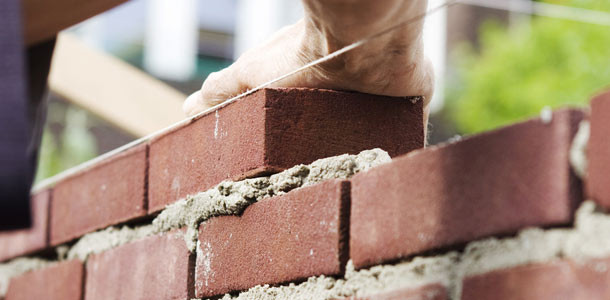Having the right tools and equipment in your home makes any job easier, and enables you to complete various tasks the right way. The bricklaying work is no exception to this rule. Therefore, if you are engaged in some bricklaying tasks around you home, having the right bricklaying tools and equipment can help you a lot. There are many types of bricklaying tools available on the market you can choose from depending on your bricklaying project. It is well known that buying cheep tools is not always a better choice, simply because they may not last long. The bricklaying work by its nature is hard and requires strong, durable and effective bricklaying tools. When searching for the right bricklaying tools, consider how often you will use them. If you are planning to use them frequently, look for bricklaying tools that are capable to withstand the toughest tasks. Bellow is a short list of the suggested bricklaying tools for your home.

Trowel. The trowel is the most useful and most commonly used bricklaying tool. Any bricklaying work starts with the trowel. This tool can be found in many different sizes and shapes depending on the nature of the bricklaying work. The trowel has one rounded edge which is used for rough cutting. This tool however is not recommended for beginners. The trowel is suitable for both right and left handed operators because it has a rounded side. When searching for a trowel, avoid buying the biggest and the cheapest one. Big-sized trowels can make lot of mess and are difficult for handling. You should always have two trowels, one for mass block work and one for face brick work.
Spirit Level. This is another bricklaying tool that is very effective and useful. The spirit level is generally used for checking the brickwork since it is laid on the bricks to check if they are plumb and leveled. It can be found in different sizes and is usually made from wood or metal. A 1000 – 1200mm spirit level is suitable when building corners, while a 500 – 600mm spirit level is ideal for general leveling.
Line Pins. The line and pins are used when building a wall since they help lay bricks properly. The pins are inserted into a mortar joints and are usually made from steel while the lines are made from nylon. They need to be well protected and kept free from mortar and knots.
Club Or Lump Hammer. This bricklaying tool is used either with chisel or with a bolster. It can be found in different shapes and sizes, but generally a medium weight hammer is recommended for home work. When using hammer, make sure the head is secured. Always wear a protective equipment, like protective gloves, when using the club hammer.
Bolster And Chisel. These bricklaying tools are commonly used with the club hammer. The bolster and the chisel are similar tools and differ only in size and shape. The bolster has a wide blade and is used for brick cutting. The chisel on the other hand, comes with smaller blade and is used for cutting brickwork.
Tape Measure. The tape measure is one very important item that you should have in your bricklaying toolbox. It can be found in different sizes and shapes, but always look for the rubber cased model because it is well protected against any damages. The tape measure comes in different lengths, usually from 5 to 8 meters.
Jointing Tool. The jointers are used for different pointing tasks and also for both block work and face brick work. The half round joint is known also as handle finish.
Brick Hammer. Your bricklaying toolbox should include a brick hammer. You can use the brick hammer to trim bricks after cutting them with a hammer and a chisel.



